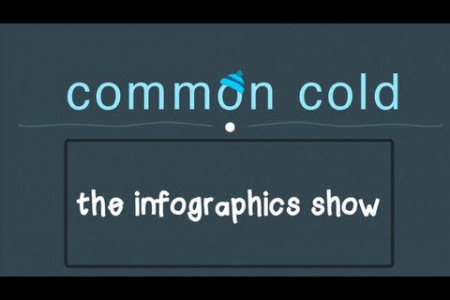
A History of LASIK
VA HISTORY OF LASIK Colombian Ophthalmologist, Jose Barraquer, developed the first microkeratome and the technique used to cut thin flaps in the cornera. Keratomileusis was also developed to alter the shape of the cornea. 1950 Mani Lal Bhaumik and a group of scientists developed a Carbon Dioxide Laser, which later be known as the excimer laser. The excimer laser will be the cornerstone for refractive eye surgery. 1968 CO. Rangaswamy Srinivasan's work at IBM Research Lab stemmed the use of lasers in refractive surgeries. He discovered that an ultraviolet excimer laser could etch living tissue in a precise manner with no thermal damage to the surrounding area. 1980 1989 Using a VISX Laser System, Dr. Marguerite B MacDonald, MD corrected the first human eye. The LASIK concept was first introduced by Dr. Pallikaris to the group of ten surgeons who were selected by the FDA to test the Visx Iaser in the U.S. 1992 The femtosecond laser also known as IntraLASIK was 2000 performed on the first patient. İntraLASIK was the first Deep corneal issue all-laser vision correction procedure. Wavefront-guided LASIK was approved by the FDA. Wavefront LASIK allowed surgeons to measure each eye with computerized topography and provide a much greater assurance of correction. 2002 The Ziemer Crystal Line system was introduced. A pulse rate of 5 million pulses per second. Its high numerical aperture optics focuses the laser beam on an extremely small tissue volume of less than 2 microns across, achieving the smoothest tissue dissection. 2010 Crystaire Brought to you by NVISKON LASER EYE CENTERS | THE EYE DOCTORS' #1 CHOICE VA HISTORY OF LASIK Colombian Ophthalmologist, Jose Barraquer, developed the first microkeratome and the technique used to cut thin flaps in the cornera. Keratomileusis was also developed to alter the shape of the cornea. 1950 Mani Lal Bhaumik and a group of scientists developed a Carbon Dioxide Laser, which later be known as the excimer laser. The excimer laser will be the cornerstone for refractive eye surgery. 1968 CO. Rangaswamy Srinivasan's work at IBM Research Lab stemmed the use of lasers in refractive surgeries. He discovered that an ultraviolet excimer laser could etch living tissue in a precise manner with no thermal damage to the surrounding area. 1980 1989 Using a VISX Laser System, Dr. Marguerite B MacDonald, MD corrected the first human eye. The LASIK concept was first introduced by Dr. Pallikaris to the group of ten surgeons who were selected by the FDA to test the Visx Iaser in the U.S. 1992 The femtosecond laser also known as IntraLASIK was 2000 performed on the first patient. İntraLASIK was the first Deep corneal issue all-laser vision correction procedure. Wavefront-guided LASIK was approved by the FDA. Wavefront LASIK allowed surgeons to measure each eye with computerized topography and provide a much greater assurance of correction. 2002 The Ziemer Crystal Line system was introduced. A pulse rate of 5 million pulses per second. Its high numerical aperture optics focuses the laser beam on an extremely small tissue volume of less than 2 microns across, achieving the smoothest tissue dissection. 2010 Crystaire Brought to you by NVISKON LASER EYE CENTERS | THE EYE DOCTORS' #1 CHOICE VA HISTORY OF LASIK Colombian Ophthalmologist, Jose Barraquer, developed the first microkeratome and the technique used to cut thin flaps in the cornera. Keratomileusis was also developed to alter the shape of the cornea. 1950 Mani Lal Bhaumik and a group of scientists developed a Carbon Dioxide Laser, which later be known as the excimer laser. The excimer laser will be the cornerstone for refractive eye surgery. 1968 CO. Rangaswamy Srinivasan's work at IBM Research Lab stemmed the use of lasers in refractive surgeries. He discovered that an ultraviolet excimer laser could etch living tissue in a precise manner with no thermal damage to the surrounding area. 1980 1989 Using a VISX Laser System, Dr. Marguerite B MacDonald, MD corrected the first human eye. The LASIK concept was first introduced by Dr. Pallikaris to the group of ten surgeons who were selected by the FDA to test the Visx Iaser in the U.S. 1992 The femtosecond laser also known as IntraLASIK was 2000 performed on the first patient. İntraLASIK was the first Deep corneal issue all-laser vision correction procedure. Wavefront-guided LASIK was approved by the FDA. Wavefront LASIK allowed surgeons to measure each eye with computerized topography and provide a much greater assurance of correction. 2002 The Ziemer Crystal Line system was introduced. A pulse rate of 5 million pulses per second. Its high numerical aperture optics focuses the laser beam on an extremely small tissue volume of less than 2 microns across, achieving the smoothest tissue dissection. 2010 Crystaire Brought to you by NVISKON LASER EYE CENTERS | THE EYE DOCTORS' #1 CHOICE VA HISTORY OF LASIK Colombian Ophthalmologist, Jose Barraquer, developed the first microkeratome and the technique used to cut thin flaps in the cornera. Keratomileusis was also developed to alter the shape of the cornea. 1950 Mani Lal Bhaumik and a group of scientists developed a Carbon Dioxide Laser, which later be known as the excimer laser. The excimer laser will be the cornerstone for refractive eye surgery. 1968 CO. Rangaswamy Srinivasan's work at IBM Research Lab stemmed the use of lasers in refractive surgeries. He discovered that an ultraviolet excimer laser could etch living tissue in a precise manner with no thermal damage to the surrounding area. 1980 1989 Using a VISX Laser System, Dr. Marguerite B MacDonald, MD corrected the first human eye. The LASIK concept was first introduced by Dr. Pallikaris to the group of ten surgeons who were selected by the FDA to test the Visx Iaser in the U.S. 1992 The femtosecond laser also known as IntraLASIK was 2000 performed on the first patient. İntraLASIK was the first Deep corneal issue all-laser vision correction procedure. Wavefront-guided LASIK was approved by the FDA. Wavefront LASIK allowed surgeons to measure each eye with computerized topography and provide a much greater assurance of correction. 2002 The Ziemer Crystal Line system was introduced. A pulse rate of 5 million pulses per second. Its high numerical aperture optics focuses the laser beam on an extremely small tissue volume of less than 2 microns across, achieving the smoothest tissue dissection. 2010 Crystaire Brought to you by NVISKON LASER EYE CENTERS | THE EYE DOCTORS' #1 CHOICE VA HISTORY OF LASIK Colombian Ophthalmologist, Jose Barraquer, developed the first microkeratome and the technique used to cut thin flaps in the cornera. Keratomileusis was also developed to alter the shape of the cornea. 1950 Mani Lal Bhaumik and a group of scientists developed a Carbon Dioxide Laser, which later be known as the excimer laser. The excimer laser will be the cornerstone for refractive eye surgery. 1968 CO. Rangaswamy Srinivasan's work at IBM Research Lab stemmed the use of lasers in refractive surgeries. He discovered that an ultraviolet excimer laser could etch living tissue in a precise manner with no thermal damage to the surrounding area. 1980 1989 Using a VISX Laser System, Dr. Marguerite B MacDonald, MD corrected the first human eye. The LASIK concept was first introduced by Dr. Pallikaris to the group of ten surgeons who were selected by the FDA to test the Visx Iaser in the U.S. 1992 The femtosecond laser also known as IntraLASIK was 2000 performed on the first patient. İntraLASIK was the first Deep corneal issue all-laser vision correction procedure. Wavefront-guided LASIK was approved by the FDA. Wavefront LASIK allowed surgeons to measure each eye with computerized topography and provide a much greater assurance of correction. 2002 The Ziemer Crystal Line system was introduced. A pulse rate of 5 million pulses per second. Its high numerical aperture optics focuses the laser beam on an extremely small tissue volume of less than 2 microns across, achieving the smoothest tissue dissection. 2010 Crystaire Brought to you by NVISKON LASER EYE CENTERS | THE EYE DOCTORS' #1 CHOICE VA HISTORY OF LASIK Colombian Ophthalmologist, Jose Barraquer, developed the first microkeratome and the technique used to cut thin flaps in the cornera. Keratomileusis was also developed to alter the shape of the cornea. 1950 Mani Lal Bhaumik and a group of scientists developed a Carbon Dioxide Laser, which later be known as the excimer laser. The excimer laser will be the cornerstone for refractive eye surgery. 1968 CO. Rangaswamy Srinivasan's work at IBM Research Lab stemmed the use of lasers in refractive surgeries. He discovered that an ultraviolet excimer laser could etch living tissue in a precise manner with no thermal damage to the surrounding area. 1980 1989 Using a VISX Laser System, Dr. Marguerite B MacDonald, MD corrected the first human eye. The LASIK concept was first introduced by Dr. Pallikaris to the group of ten surgeons who were selected by the FDA to test the Visx Iaser in the U.S. 1992 The femtosecond laser also known as IntraLASIK was 2000 performed on the first patient. İntraLASIK was the first Deep corneal issue all-laser vision correction procedure. Wavefront-guided LASIK was approved by the FDA. Wavefront LASIK allowed surgeons to measure each eye with computerized topography and provide a much greater assurance of correction. 2002 The Ziemer Crystal Line system was introduced. A pulse rate of 5 million pulses per second. Its high numerical aperture optics focuses the laser beam on an extremely small tissue volume of less than 2 microns across, achieving the smoothest tissue dissection. 2010 Crystaire Brought to you by NVISKON LASER EYE CENTERS | THE EYE DOCTORS' #1 CHOICE
A History of LASIK
Source
Unknown. Add a sourceCategory
HealthGet a Quote








